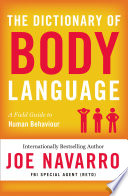

The book delves into the cultural variations in body language, emphasizing that gestures and expressions are not universally understood. What may be considered a friendly gesture in one culture could be offensive in another. The author provides examples of specific body language cues across different cultures, encouraging readers to educate themselves about cultural differences. This knowledge is particularly valuable for individuals working in diverse environments or traveling internationally, as it promotes respectful and effective communication.
Continue readingThe book emphasizes the importance of non-verbal cues in communication. Body language often conveys more than spoken words, as it encompasses facial expressions, gestures, posture, and eye contact. Recognizing these signals can enhance interpersonal interactions, allowing individuals to interpret emotions and intentions more accurately. For instance, crossed arms may indicate defensiveness, while open palms can suggest honesty and openness. The author provides insights into how different cultures interpret body language, highlighting the need for cultural sensitivity in global communication. By understanding these non-verbal cues, readers can improve their ability to connect with others, whether in personal relationships or professional settings.
Continue readingContext plays a crucial role in interpreting body language. The same gesture can have different meanings depending on the situation, the relationship between individuals, and cultural norms. For example, maintaining eye contact can signify confidence in some cultures, while in others, it may be seen as disrespectful. The book stresses the importance of considering the broader context when analyzing body language, as misinterpretations can lead to misunderstandings. Readers are encouraged to observe the environment and the dynamics at play to gain a clearer understanding of the non-verbal signals being communicated.
Continue readingOne of the key themes in the book is the identification of deceptive body language. The author outlines specific cues that may indicate dishonesty, such as inconsistent facial expressions, fidgeting, or avoiding eye contact. Understanding these signs can be particularly beneficial in professional settings, such as negotiations or interviews, where trust is paramount. The book also discusses how to respond to deceptive signals effectively, urging readers to maintain a calm demeanor and seek clarification rather than making accusations. This knowledge can empower individuals to navigate complex social interactions with greater confidence.
Continue readingThe book provides practical advice on how to enhance one's personal presence through body language. The author discusses the significance of posture, gestures, and facial expressions in projecting confidence and authority. For instance, standing tall with shoulders back can create an impression of self-assuredness. The book also offers tips on how to use body language to engage and captivate an audience, whether in a presentation or a casual conversation. By mastering these techniques, readers can improve their ability to influence others and leave a lasting impression.
Continue readingBody language significantly affects personal and professional relationships. The book explores how non-verbal communication can build rapport, foster trust, and enhance emotional connections. For example, mirroring someone's body language can create a sense of empathy and understanding. The author highlights the importance of being aware of one’s own body language and how it can impact interactions. By cultivating positive body language habits, readers can strengthen their relationships and create a more harmonious environment, whether at home or in the workplace.
Continue readingTo help readers apply the concepts discussed, the book includes practical exercises aimed at mastering body language skills. These exercises encourage self-reflection and practice in real-life situations, facilitating the development of greater awareness and control over one’s own body language. The author suggests keeping a journal to track progress and observations, which can help reinforce learning. By actively engaging with the material, readers can refine their ability to read and respond to body language, ultimately enhancing their communication skills.
Continue reading